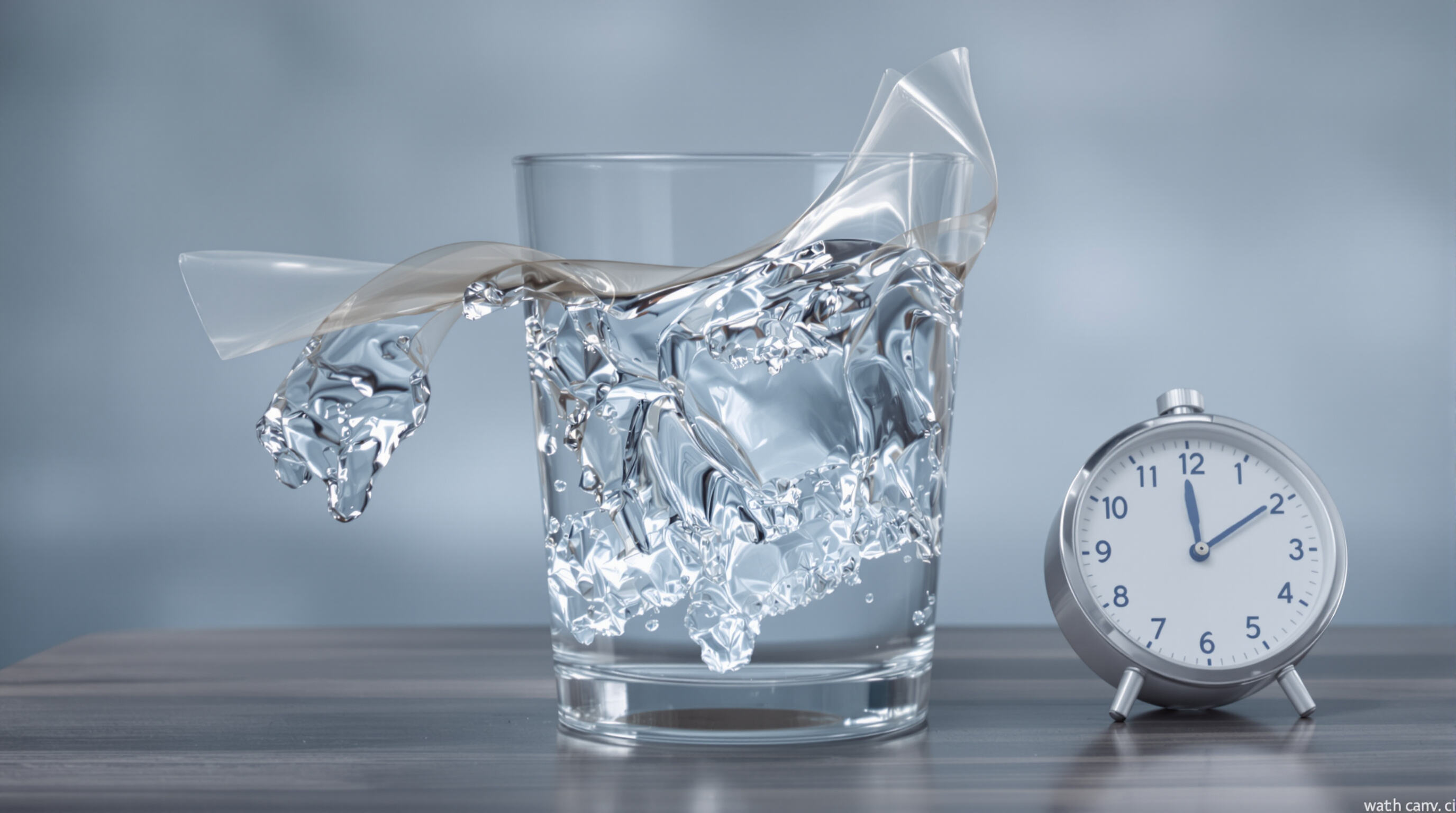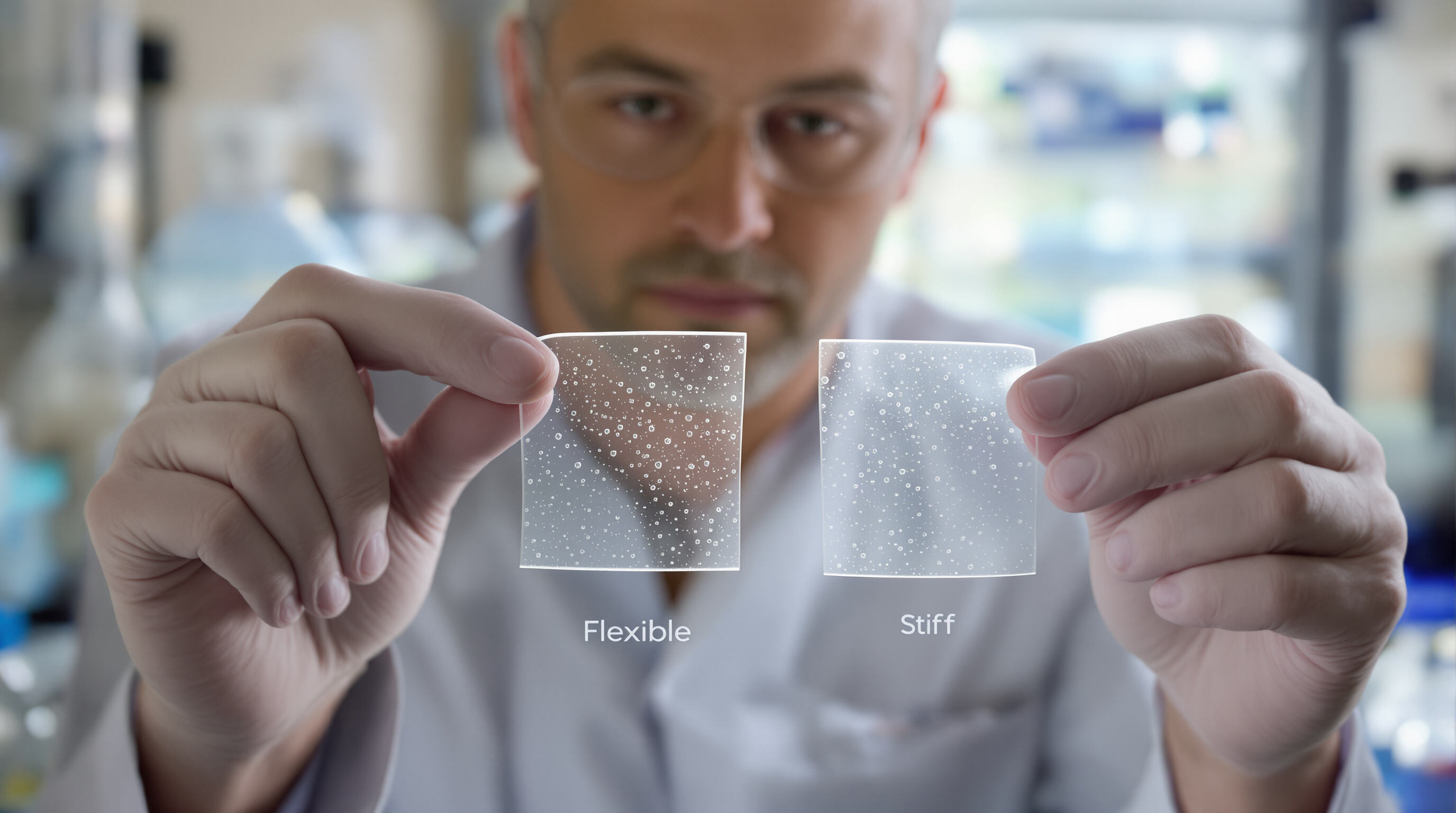Key Properties of PVA 0588 Defining Performance
Chemical Structure and Molecular Weight of PVA 0588
The performance characteristics of PVA 0588 come down to its molecular weight around 22,000 g per mole and polymerization degree near 500 units. These numbers mean we get relatively short polymer chains when compared with other grades of PVA material. The shorter chains make the substance less viscous but still maintain good hydrogen bonding properties which matters a lot for applications like spray coatings or films that need to dissolve quickly. A paper from Express Polymer Letters back in 2020 actually showed something interesting here too. They found that these shorter chains lead to lower crystallinity levels in the material, which explains why it dissolves so much faster in water than many alternatives do.
Solubility Profile and Thermal Characteristics
PVA 0588 will dissolve entirely in cold or at room temperature water (below 25 degrees Celsius) almost instantly because it has an 88 percent hydrolysis level. The material stays stable when heated, working well even at temperatures reaching 180 degrees Celsius, which makes it great for extrusion processes without breaking down too early. When compared to fully hydrolyzed options like PVA 1799, this partially hydrolyzed version actually works better in formulations that need to handle both slightly acidic and slightly alkaline environments. This property gives formulators more freedom when creating products since they don't have to worry so much about pH levels affecting performance.
Degree of Hydrolysis and Its Impact on Performance
The 88% hydrolysis level strikes an optimal balance:
- Enough hydroxyl groups to support strong hydrogen bonding in adhesives
- Sufficient residual acetate groups to limit excessive crystallization
This dual functionality enables tensile strengths up to 35 MPa while ensuring complete dissolution in under 20 seconds in water.
Comparison with Other PVA Grades (e.g., PVA 2488, PVA 1799)
| Property | PVA 0588 | PVA 2488 | PVA 1799 |
|---|---|---|---|
| Molecular Weight | 22,000 g/mol | 35,000 g/mol | 85,000 g/mol |
| Dissolution Time | 15–20 sec | 40–50 sec | 120–180 sec |
| Optimal Temp Range | 50–180°C | 70–190°C | 90–220°C |
Due to its shorter chains, PVA 0588 exhibits 60% lower entanglement resistance than PVA 1799, making it ideal for low-viscosity systems requiring rapid dissolution and easy processing.
Low-Viscosity Applications of PVA 0588 in Industrial Formulations
PVA 0588’s low viscosity makes it a preferred choice in industrial applications where fluidity, rapid mixing, and efficient processing are essential.
Formulation Advantages in Coatings and Adhesives
With a molecular weight of 22,000 g/mol, PVA 0588 integrates smoothly into water-based formulations, reducing shear stress during mixing by up to 40% compared to high-viscosity alternatives. This promotes uniform film formation in pressure-sensitive adhesives and minimizes defects like pinholes in coatings, improving product consistency and performance.
Use in Aqueous Solutions for Sprayable and Coatable Products
PVA 0588 achieves full solubility in less than five minutes at 25°C, supporting sprayable systems such as agricultural seed coatings and thin-film drug delivery. Its rapid dispersion reduces equipment clogging by 65% compared to starch-based binders, enhancing operational efficiency in large-scale manufacturing.
Processing Benefits in Industrial Manufacturing
Its low melt viscosity allows extrusion at 180°C—about 20% lower than required for high-molecular-weight PVAs—reducing energy consumption and minimizing thermal degradation. This contributes to faster production cycles for cast films and injection-molded parts, boosting throughput by up to 30%, according to a 2023 analysis of industrial polymer processing techniques.
Rapid Dissolution Behavior and Water-Soluble Film Applications

Dissolution Kinetics in Cold and Room-Temperature Water
PVA 0588 dissolves rapidly in cold and room-temperature water due to its low molecular weight (20,000–30,000 Da) and controlled hydrolysis (87–89%). It reaches over 95% solubility within 30 seconds, a key advantage for time-sensitive uses like detergent pods. Even at 10°C, dissolution slows by only 15% compared to 25°C, ensuring reliable performance across varying climates.
Film Thickness and Surface Area Effects on Dissolution Rate
Thinner films (<50 μm) dissolve up to 40% faster than thicker ones (100 μm) due to shorter diffusion paths. Increasing surface area through microperforations or texture can accelerate dissolution by 20–35%, offering precise control in applications such as single-dose pharmaceuticals and seed treatments.
Manufacturing Techniques: Casting vs. Extrusion
Film casting produces uniform, transparent sheets ideal for packaging but requires significant energy for solvent removal and has limited scalability. Extrusion offers higher throughput but demands tight temperature control to preserve dissolution speed and mechanical strength, often necessitating additives to manage viscosity-related trade-offs.
Mechanical Strength and Barrier Properties
Despite rapid water solubility, PVA 0588 films maintain tensile strengths between 25 and 35 MPa, sufficient for handling during transport and use. With an oxygen transmission rate below 10 cc/m²/day, they effectively protect oxygen-sensitive contents like probiotics and agrochemicals. Proper storage at humidity levels below 50% RH ensures long-term stability before activation.
Real-World Applications: Detergent Pods, Agriculture, and Filtration
Applications in Detergent Pods and Agricultural Encapsulation
PVA 0588 has become a go-to material for making single dose detergent pods and encapsulating agrochemicals because it dissolves quickly in cold water, typically within 30 to 45 seconds when temperatures are below 15 degrees Celsius, leaving behind almost no residue. Farmers appreciate how this substance helps cut down on fertilizer and pesticide runoff by around 25 to 40 percent compared to traditional coating methods. What makes PVA 0588 particularly attractive to manufacturers is the impressive balance between its nearly complete solubility rate of 98 to 99 percent at room temperature (around 20 degrees Celsius) and its decent film strength ranging from 2.5 to 3.0 megapascals. This combination means the product remains stable and intact even when stored in damp environments over extended periods.
Case Study: Water-Soluble Packaging Using PVA 0588
A 2023 pilot evaluated PVA 0588 films in dishwasher pod packaging, achieving zero plastic waste and 99.7% dissolution efficiency even at 10°C. Results showed superior performance over competing PVOH grades:
| Parameter | PVA 0588 | Competing PVOH Grades |
|---|---|---|
| Dissolution Time | 32 sec | 45–60 sec |
| Film Tensile Strength | 2.8 MPa | 1.9–2.2 MPa |
| Moisture Resistance | 72 hrs | 48–60 hrs |
Notably, PVA 0588 maintained structural integrity for 14 months at 60% relative humidity, outperforming alternative materials.
Performance in Water Purification and Contaminant Filtration
PVA 0588 membranes achieve 92–95% adsorption of heavy metal ions such as Pb²⁺ and Cd²⁺ in water treatment. Being fully water-soluble post-use, they eliminate secondary waste—a distinct advantage over non-degradable filters. When combined with PVA 0588-based flocculants, wastewater trials demonstrated an 87% reduction in microplastics.
Trend Analysis: Growing Use in Sustainable Filtration Systems
Driven by EU and EPA regulations phasing out persistent materials, demand for PVA 0588 in filtration rose 18% year-over-year from 2021 to 2023. Projections indicate that 65% of municipal water treatment facilities will adopt soluble PVA membranes by 2030, potentially reducing landfill waste by 1.2 million metric tons annually, according to Future Market Insights (2024).
Modifying PVA 0588 for Enhanced Stability and Functional Trade-offs

Chemical Crosslinkers: Glutaraldehyde and Boric Acid Treatments
When we crosslink PVA 0588 using substances such as glutaraldehyde or boric acid, it significantly boosts material stability via either covalent bonds or those sensitive to pH changes. Take glutaraldehyde for instance it can boost tensile strength around forty percent, though this comes at a cost since elongation drops roughly thirty percent. There's always that balance between making something rigid versus keeping it flexible enough for certain applications. Boric acid works differently, creating bonds that actually reverse themselves under specific conditions. This property makes it really valuable when dealing with controlled substance release in places where the environment becomes more alkaline, which happens quite often in farming contexts for things like fertilizer encapsulation. What's interesting is how these treatment methods cut down on swelling issues too. Untreated films might swell quite a bit, but after treatment, swelling gets reduced somewhere between eighty five and ninety percent depending on exact conditions and formulation details.
Thermal and UV-Induced Crosslinking Methods
When heated between 180 and 200 degrees Celsius, PVA 0588 undergoes physical crosslinking through crystal formation which boosts its thermal stability by around 60%. For those working with UV curing techniques, adding photoinitiators like acryloyl chloride can harden surfaces within just five minutes flat. This makes it particularly useful for creating quick setting spray adhesives in industrial settings. Research from several polymer labs indicates that mixing in about 10% sorbitol during heating keeps materials dissolving in under half a minute while making them twice as resistant to tearing. The combination of these properties explains why many manufacturers prefer this approach when they need both speed and durability in their adhesive products.
Trade-offs Between Solubility and Mechanical Durability
For every 1% boost in crosslink density, cold water takes around 12 to 15 extra seconds to dissolve the material. Some advanced films designed for filters might still sit at under 2% solubility even after a full day in water, though they definitely cost more energy during production. When designing these materials, it's all about matching what the job requires. Take detergent pods for instance they need to break down fast, ideally within 25 seconds or so. But water purification membranes tell a different story. These need to hold together for much longer periods, staying intact for over three days when submerged without failing.
FAQs on PVA 0588
What is the molecular weight of PVA 0588?
The molecular weight of PVA 0588 is around 22,000 g/mol.
How quickly does PVA 0588 dissolve in water?
PVA 0588 typically dissolves in cold or room-temperature water within 15 to 20 seconds.
What are the benefits of using PVA 0588 in coatings?
PVA 0588's low viscosity reduces shear stress during mixing, promotes uniform film formation, and minimizes defects like pinholes, enhancing performance in coatings.
How does PVA 0588 perform in detergent pods?
PVA 0588 dissolves quickly in cold water, ensuring nearly complete dissolution and minimal residue, which is ideal for detergent pods.
Table of Contents
- Key Properties of PVA 0588 Defining Performance
- Low-Viscosity Applications of PVA 0588 in Industrial Formulations
- Rapid Dissolution Behavior and Water-Soluble Film Applications
- Real-World Applications: Detergent Pods, Agriculture, and Filtration
- Modifying PVA 0588 for Enhanced Stability and Functional Trade-offs
- FAQs on PVA 0588

